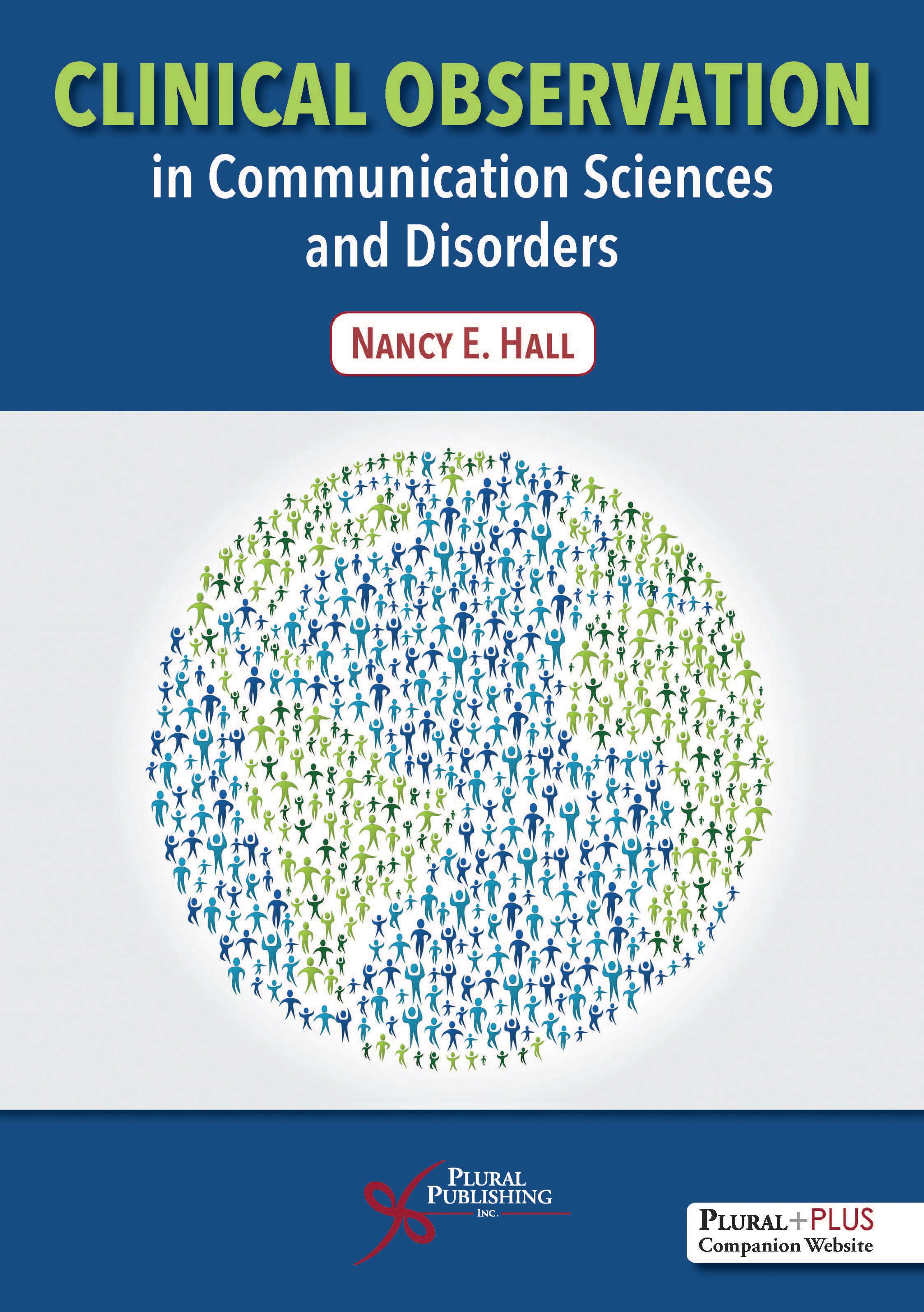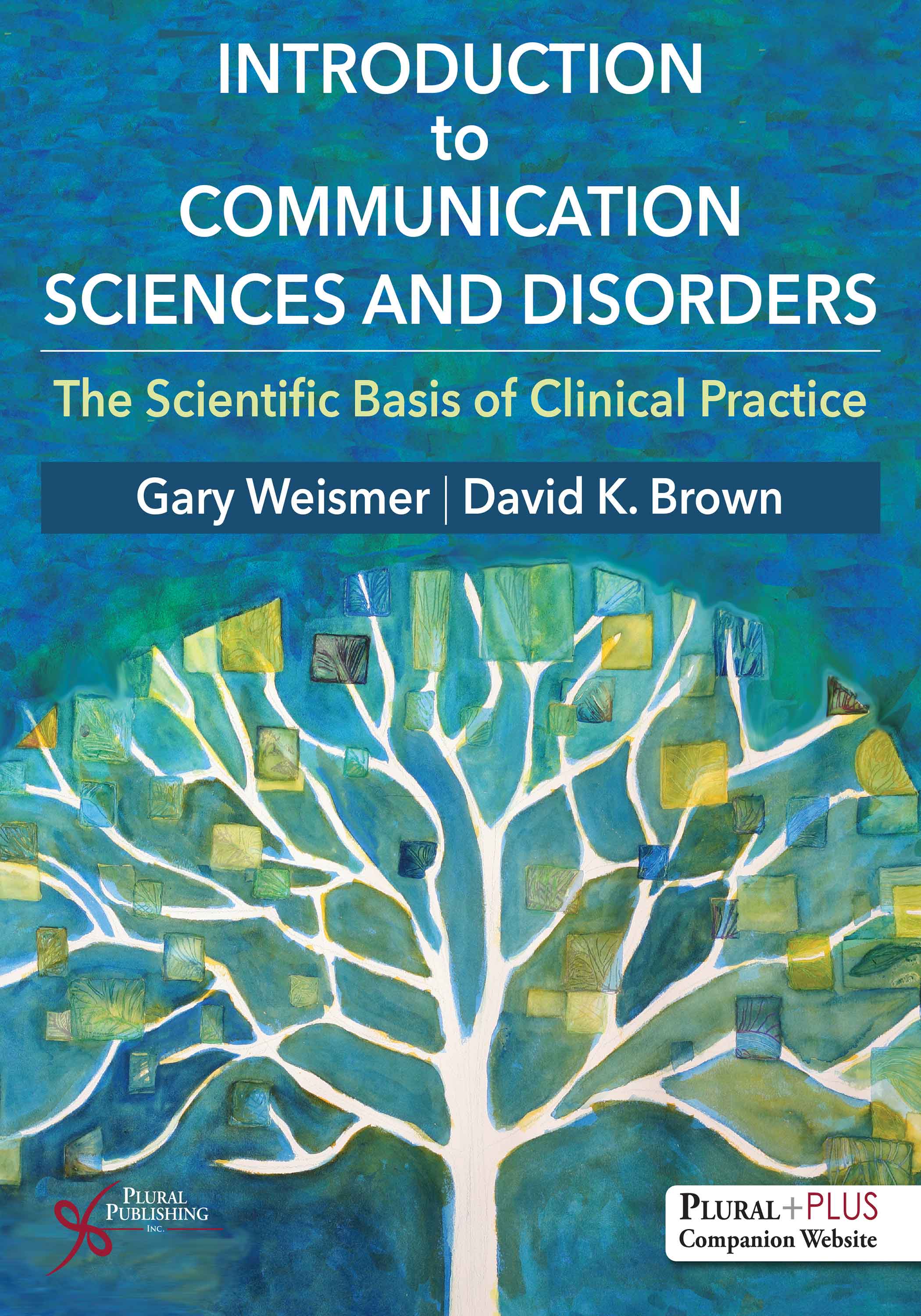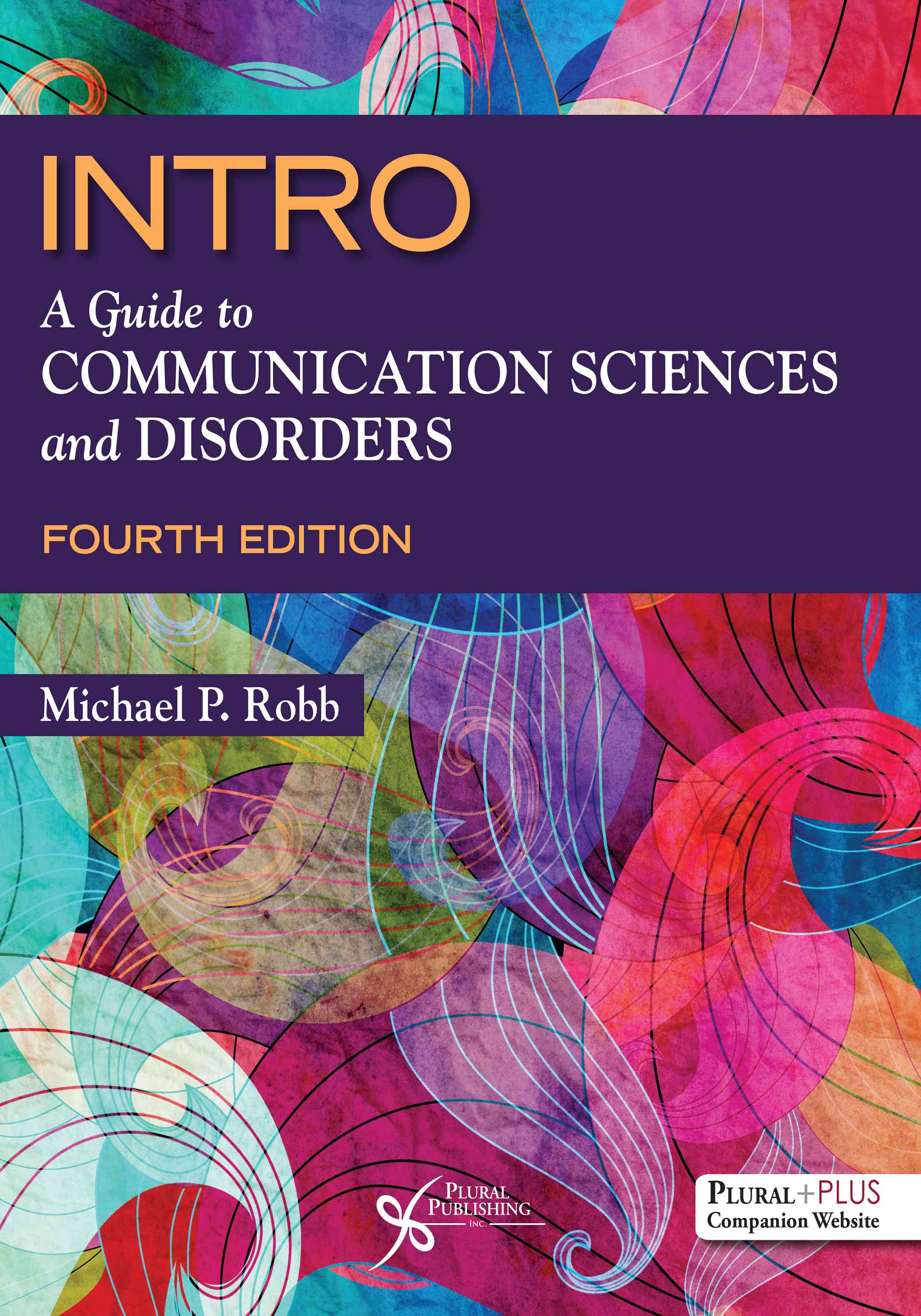
INTRO A Guide to Communication Sciences and Disorders.
Third Edition
Michael P. Robb
Details: 374 pages, Full Color, Softcover, 8.5" x 11"
ISBN13: 978-1-94488-366-9
© 2020 | Available
INTRO: A Guide to Communication Sciences and Disorders, Third Edition is designed for the undergraduate student with an interest in entering the field of communication sciences and disorders. INTRO is an introduction to the professions of speech-language pathology and audiology and the underlying discipline on which they are based, communication sciences and disorders. This text provides essential information concerning a wide range of communication disorders found in children and adults.
Key Features
- A strong international focus with coverage of country-specific incidence and prevalence of various communication disorders.
- Each chapter begins with learning objectives and ends with study questions to review key concepts.
- Bolded key terms and a comprehensive glossary improve retention of the material.
- The text includes real-life examples in the form of video links to help reinforce the information in the text.
New to the Third Edition
- A reorganized chapter on communication disorders and the professions for greater flow of information (Chapter 1).
- A NEW chapter on alternative and augmentative communication (Chapter 10).
- Thoroughly updated chapters on audition (Chapters 12 and 13).
- A PluralPlus companion website with PowerPoint lecture slides and a sample syllabi for instructors, as well as practice quizzes and additional web resources for students.
INTRO is beautifully illustrated and written in an engaging, yet straightforward approach, with an overview of the formative history, as well as current theories and research provided for each disorder. The sole authorship of the book ensures a uniform writing style, which is often missing from introductory texts. The book holds worldwide appeal and is written for an international audience. For some, this book may serve as a springboard for the pursuit of a career in audiology and speech-language pathology; nevertheless, every reader will acquire an appreciation of the gift of communication.
Reviews
"The reorganization of the chapters and the updated information—particularly the AAC chapter—will be greatly beneficial. ...I appreciate the consistent focus throughout the chapters. I think the historical background of each chapter is exactly the kind of information that brings in students in terms of engagement."
—Breanna I. Krueger, PhD, CCC-SLP, Assistant Professor, Communication Disorders, University of Wyoming
"The color photos are eye catching and are beneficial for undergraduate students. Too much text on a page can be overwhelming for these eager young learners. The internet resources are great for the students. They are learning what internet-based resources are reputable, so this is helpful. The links to the video examples is something that sets this text apart from the other intro books."
—Angela D. Haendel, MS, CCC-SLP, Assistant Professor, Concordia University Wisconsin
"The tone of the writing and presentation of the material is appropriate and well-conceived. It is an excellent foundational text, but it also offers some important contextual information for the more experienced clinician who may want to an overview of a specific area of practice or obtain a historical perspective of their profession."
—Jane Bickford, BAppSc (SpPath), PhD, CPSP, Lecturer, Speech Pathology, Flinders University, South Australia, Australia
Foreword by John H. Saxman, PhD
Preface
Reviewers
Section 1. Background to Communication Sciences and Disorders
Chapter 1. Communication Disorders and the Professions
Objectives
Introduction
Terminology and Definitions
Models of Communication
The Professions
A Brief History of the Professions
Educational Preparation
Professional Work Settings
Professional Code of Ethics
Cultural Considerations and Communication Disorders
The Professions of Audiology and Speech-Language Pathology on the World Wide Web
Study Questions
References
Appendix 1–A. ASHA Code of Ethics (2016)
Chapter 2. Anatomy of Speech and Hearing
Objectives
Introduction
Speech Anatomy
The Process of Speech Production
Hearing Anatomy
The Process of Hearing
Historic Aspects of Anatomy and Physiology
Cultural Considerations in Anatomy and Physiology
Current Research in Speech and Hearing Anatomy and Physiology
Anatomy and Physiology on the World Wide Web
Study Questions
References
Section 2. Developmental Communication Disorders
Chapter 3. Child Language Disorders
Objectives
Introduction
Terminology and Definitions
Language Development
Historic Aspects of Child Language Disorders
Types of Child Language Disorders
Current Theories Regarding Child Language Development and Disorders
Assessment of Child Language Disorders
Treatment of Child Language Disorders
Cultural Considerations and Child Language Disorders
Current Research in Child Language Disorders
Child Language Disorders on the World Wide Web
Study Questions
References
Chapter 4. Child Phonological Disorders
Objectives
Introduction
Terminology and Definitions
Historic Aspects of Child Phonological Disorders
Types of Phonological Disorders
Current Theories Regarding Child Phonological Disorders
Assessment of Child Phonological Disorders
Treatment of Child Phonological Disorders
Cultural Consideration and Child Phonological Disorders
Current Research in Child Phonological Disorders
Child Phonological Disorders on the World Wide Web
Study Questions
References
Chapter 5. Fluency Disorders
Objectives
Introduction
Terminology and Definitions
Historic Aspects of Fluency Disorders
Types of Fluency Disorders
Current Theories Regarding Stuttering
Assessment of Fluency Disorders
Treatment of Fluency Disorders
Cultural Considerations and Fluency Disorders
Current Research in Fluency Disorders
Fluency Disorders on the World Wide Web
Study Questions
References
Chapter 6. Cleft Lip and Palate
Objectives
Introduction
Terminology and Definitions
Historic Aspects of Cleft Lip and Palate
Disorders of Cleft Lip and Palate
Current Theories of Cleft Lip and Palate
Assessment of Cleft Lip and Palate
Treatment of Cleft Lip and Palate
Cultural Considerations and Cleft Lip and Palate
Current Research in Cleft Lip and Palate
Cleft Lip and Palate on the World Wide Web
Study Questions
References
Section 3. Acquired and Genetic Communication Disorders
Chapter 7. Voice Disorders
Objectives
Introduction
Terminology and Definitions
Historic Aspects of Voice Disorders
Types of Voice Disorders
Current Theories of Voice Disorders
Assessment of Voice Disorders
Treatment of Voice Disorders
Cultural Considerations and Voice Disorders
Current Research in Voice Disorders
Voice Disorders on the World Wide Web
Study Questions
References
Chapter 8. Neurogenic Communication Disorders
Objectives
Introduction
Terminology and Definitions
Historic Aspects of Neurogenic Communication Disorders
Types of Neurogenic Communication Disorders
Current Theories Regarding Neurogenic Communication Disorders
Assessment of Neurogenic Communication Disorders
Treatment of Neurogenic Communication Disorders
Cultural Considerations and Neurogenic Communication Disorders
Current Research in Neurogenic Communication Disorders
Neurogenic Communication Disorders on the World Wide Web
Study Questions
References
Chapter 9. Dysphagia
Objectives
Introduction
Terminology and Definitions
Historic Aspects of Dysphagia
Types of Dysphagia
Causes of Dysphagia
Assessment of Dysphagia
Treatment of Dysphagia
Cultural Considerations and Dysphagia
Current Research in Dysphagia
Dysphagia on the World Wide Web
Study Questions
References
Chapter 10. Augmentative and Alternative Communication
Objectives
Introduction
Terminology and Definitions
Historic Aspects of AAC
Types of AAC
Assessment of AAC
Treatment of AAC
Cultural Considerations and AAC
Current Research in AAC
AAC on the World Wide Web
Study Questions
References
Chapter 11. Genetics and Syndromes
Objectives
Introduction
Terminology and Definitions
Historic Aspects of Genetics
Types of Syndromes
Assessment of Genetic Conditions
Treatment of Genetic Conditions
Cultural Considerations and Genetics
Current Research in Genetics
Genetics and Syndromes on the World Wide Web
Study Questions
References
Section 4. Audition
Chapter 12. Hearing Disorders
Objectives
Introduction
Terminology and Definitions
Historic Aspects of Hearing Disorders
Types of Hearing Disorders
Assessment of Hearing Disorders
Cultural Considerations and Hearing Disorders
Current Research in Hearing Disorders
Hearing Disorders on the World Wide Web
Study Questions
References
Chapter 13. Auditory Rehabilitation
Objectives
Introduction
Terminology and Definitions
Historic Aspects of Aural Rehabilitation
Treatment Approaches: Hearing Rehabilitation
Treatment Approaches: Speech and Language Rehabilitation
Cultural Considerations and Aural Rehabilitation
Current Research in Aural Rehabilitation
Aural Rehabilitation on the World Wide Web
Study Questions
References
Glossary
Index
Purchasers of this book receive complimentary access to supplementary materials hosted on a PluralPlus companion website.
To access the materials, log in to the website using the URL located inside the front cover of your copy of INTRO.
STUDENTS:
To access the student materials, you must register on the companion website and log in using the access code located inside the front cover of your textbook.
INSTRUCTORS:
To access the instructor materials, you must contact Plural Publishing, Inc. to be verified as an instructor and receive your access code.
Email: instructormaterials@pluralpublishing.com
Tel: 866-758-7251 (toll free) or 858-492-1555

Clinical Observation in Communication Sciences and Disorders
First Edition
Nancy E. Hall
Details: 185 pages, B&W, Softcover, 7" x 10"
ISBN13: 978-1-63550-019-6
© 2019 | Available

Hegde's PocketGuide to Communication Disorders
Second Edition
M.N. Hegde
Details: 496 pages, 2-Color, Softcover, 4.5" x 8"
ISBN13: 978-1-94488-314-0
© 2018 | Available

Comprehensive Dictionary of Audiology: Illustrated
Third Edition
Brad A. Stach
Details: 349 pages, B&W, Softcover, 7" x 10"
ISBN13: 978-1-94488-389-8
© 2019 | Available

Professional Communication in Audiology
First Edition
Virginia Ramachandran, Brad A. Stach
Details: 160 pages, B&W, Softcover, 6" x 9"
ISBN13: 978-1-59756-365-9
© 2013 | Available

Audiology in the USA
First Edition
James Jerger
Details: 128 pages, B&W, eBook
ISBN13: 978-1-59756-868-5
© 2009 | Available

Introduction to Communication Sciences and Disorders: The Scientific Basis of Clinical Practice
First Edition
Gary Weismer, David K. Brown
Details: 388 pages, Full Color, Softcover, 8.5"x11"
ISBN13: 978-1-59756-297-3
© 2021 | Available

Speech-Language Pathology Assistants: A Resource Manual
Third Edition
Jennifer A. Ostergren, Margaret Vento-Wilson
Details: 612 pages, B&W, Softcover, 7" x 10"
ISBN13: 978-1-63550-415-6
© 2024 | Available

The Communication Disorders Casebook: Learning by Example
Second Edition
Shelly S. Chabon, Ellen R. Cohn, Dorian Lee-Wilkerson
Details: 563 pages, B&W, Softcover, 8.5" x 11"
ISBN13: 978-1-63550-409-5
© 2025 | Available

INTRO: A Guide to Communication Sciences and Disorders
Fourth Edition
Michael P. Robb
Details: 412 pages, Full Color, Softcover, 8.5" x 11"
ISBN13: 978-1-63550-476-7
© 2025 | Available

